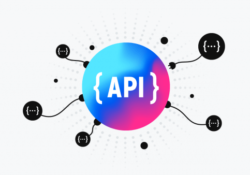Understanding API Attacks: Types and Examples
Understanding API Attacks: Types and Examples
Blog Article
In the rapidly evolving landscape of technology, Application Programming Interfaces (APIs) play a pivotal role in enabling seamless communication and knowledge exchange between different software systems. However, this increased connectivity also results in new security challenges, with API attacks proving to be a significant threat to organizations. In this article, we will explore this is of API attacks, the different types, and provide examples to shed light on the potential risks associated with these attacks.
What is an API Attack?
An api attack refers to any malicious activity that targets vulnerabilities in an API to gain unauthorized access, manipulate data, or disrupt the normal functioning of an application or system. APIs work as a bridge between different software components, permitting them to interact and share information. This interaction, or even adequately protected, becomes vunerable to exploitation by attackers.
API Attack Meaning:
API attacks encompass a selection of tactics aimed at exploiting weaknesses in API implementations. These attacks can compromise the confidentiality, integrity, and option of data and services. Hackers may exploit vulnerabilities inside the API design, authentication mechanisms, or authorization ways to carry out their malicious activities.
API Attack Types:
Injection Attacks:
• SQL Injection: Attackers inject malicious SQL queries into API requests to control or retrieve sensitive information from databases.
• XPath Injection: Similar to SQL injection, attackers manipulate XML-based API requests to exploit vulnerabilities and access unauthorized data.
Authentication Attacks:
• API Key Theft: Attackers try to steal API keys, often transmitted in plaintext, to achieve unauthorized access.
• Credential Stuffing: Using previously compromised credentials to achieve unauthorized access by exploiting reused usernames and passwords.
Denial of Service (DoS) Attacks:
• Rate Limiting Bypass: Attackers attempt to overwhelm an API by sending an excessive number of requests, bypassing rate-limiting protections.
• DDoS Attacks: Overloading an API using a massive amount of requests from multiple sources to render it inaccessible.
Man-in-the-Middle (MitM) Attacks:
• Data Interception: Intercepting and modifying data exchanged between API client and server to govern or gain unauthorized access.
Data Exposure:
• Insecure Direct Object References (IDOR): Exploiting misconfigurations to get into sensitive data directly through API endpoints.
• Sensitive Data Exposure: Obtaining usage of confidential information transmitted via APIs, for example personally identifiable information (PII).
API Attacks Examples:
Facebook API Bug (2018):
• Facebook possessed a bug in its API that allowed attackers to get into private photos of countless users. The bug, present for 12 days in September 2018, potentially exposed user photos that weren't shared on their timeline.
GitHub API Token Leak (2020):
• Misconfigured API tokens in GitHub repositories triggered unauthorized access, allowing attackers to clone private repositories and access sensitive information.
Equifax API Vulnerability (2017):
• The Equifax breach occurred because of a vulnerability inside the Apache Struts framework, affecting an API employed for handling credit dispute requests. Attackers exploited this vulnerability to get into sensitive personal information of 147 million individuals.
In summary, as organizations increasingly depend on APIs to enhance their services, the importance of securing these interfaces can not be overstated. Comprehending the various types of API attacks and gaining knowledge from real-world examples is crucial for developing robust security measures to protect against potential threats. Regular security assessments, thorough testing, and adopting best practices in API development are necessary steps in safeguarding against API attacks.